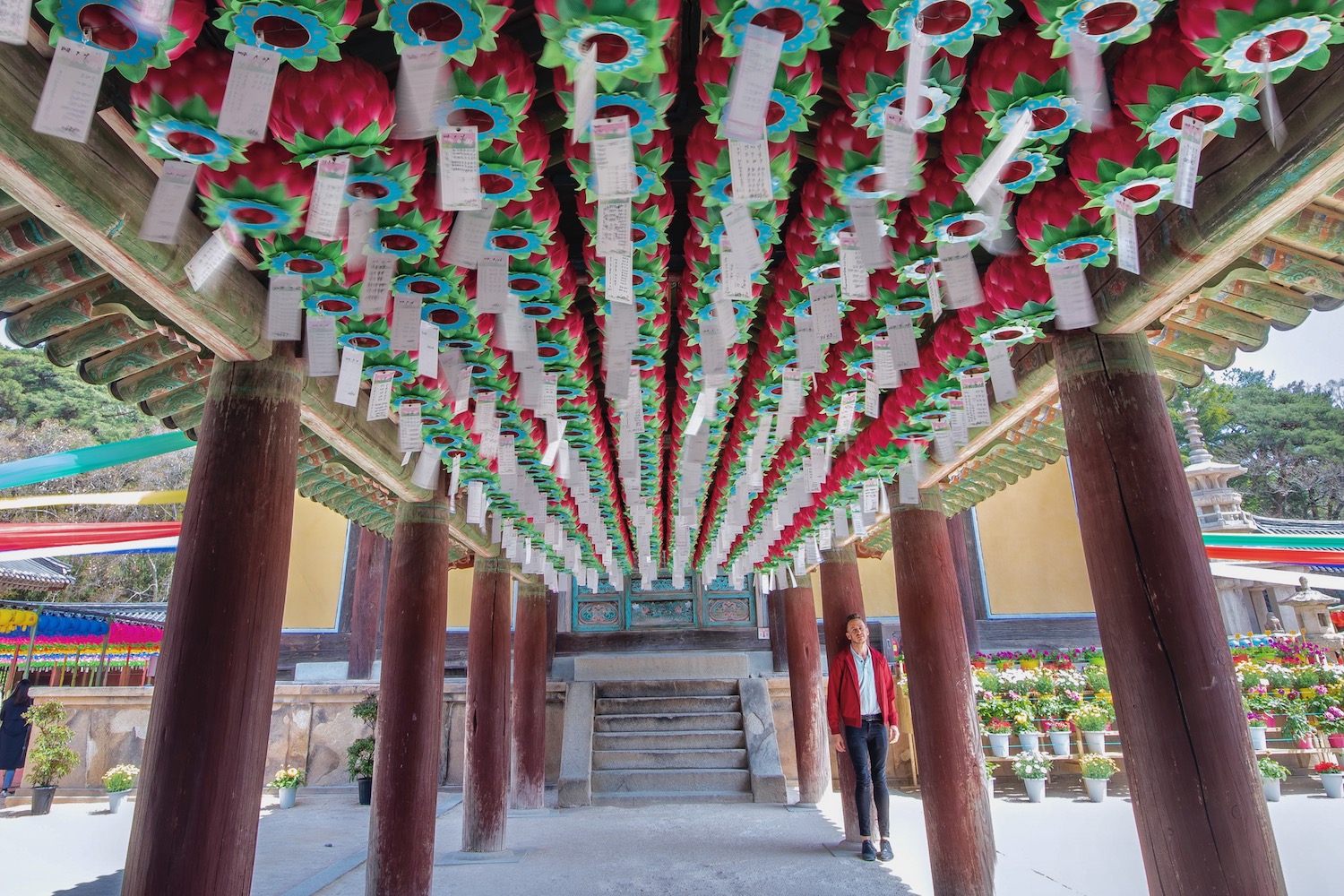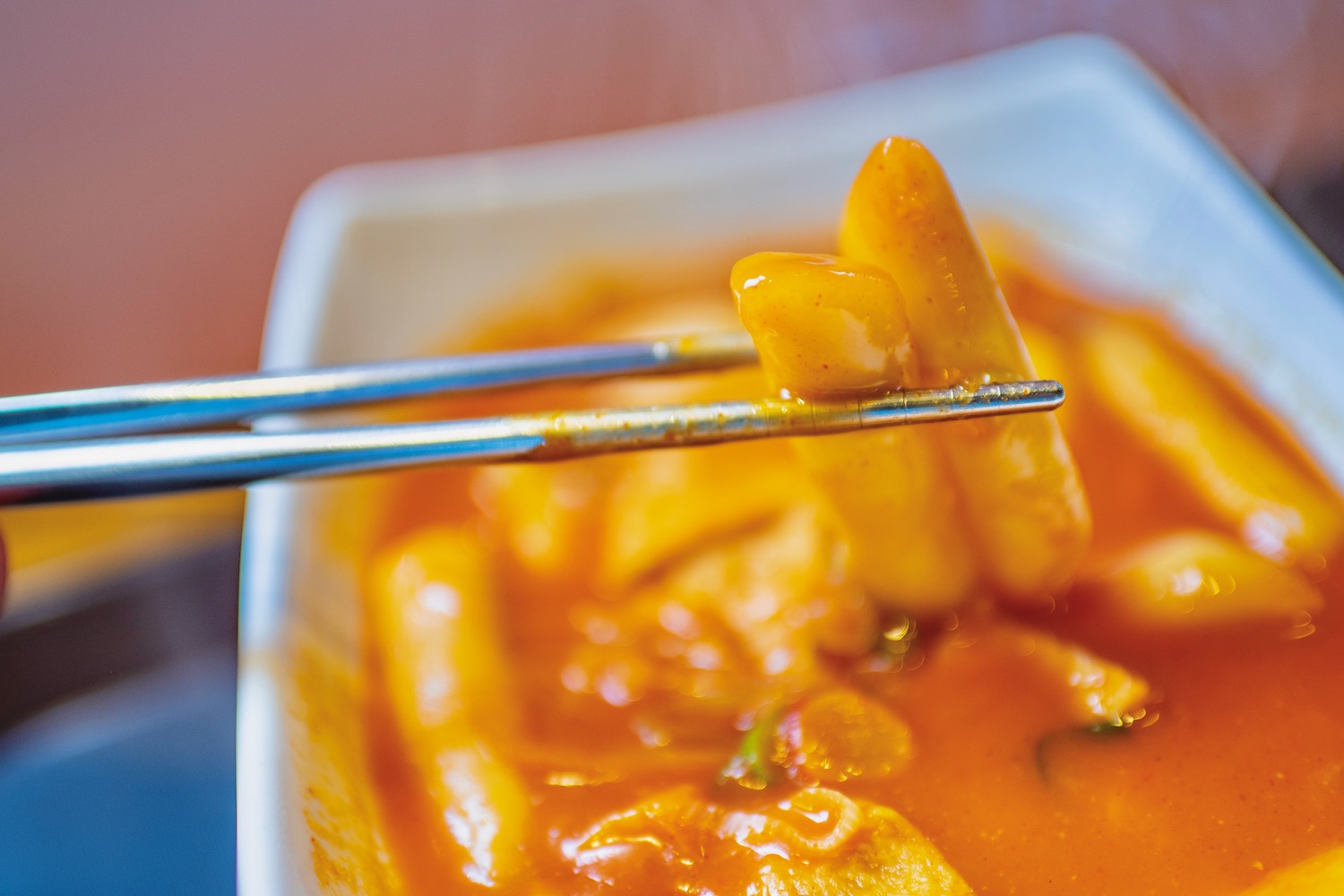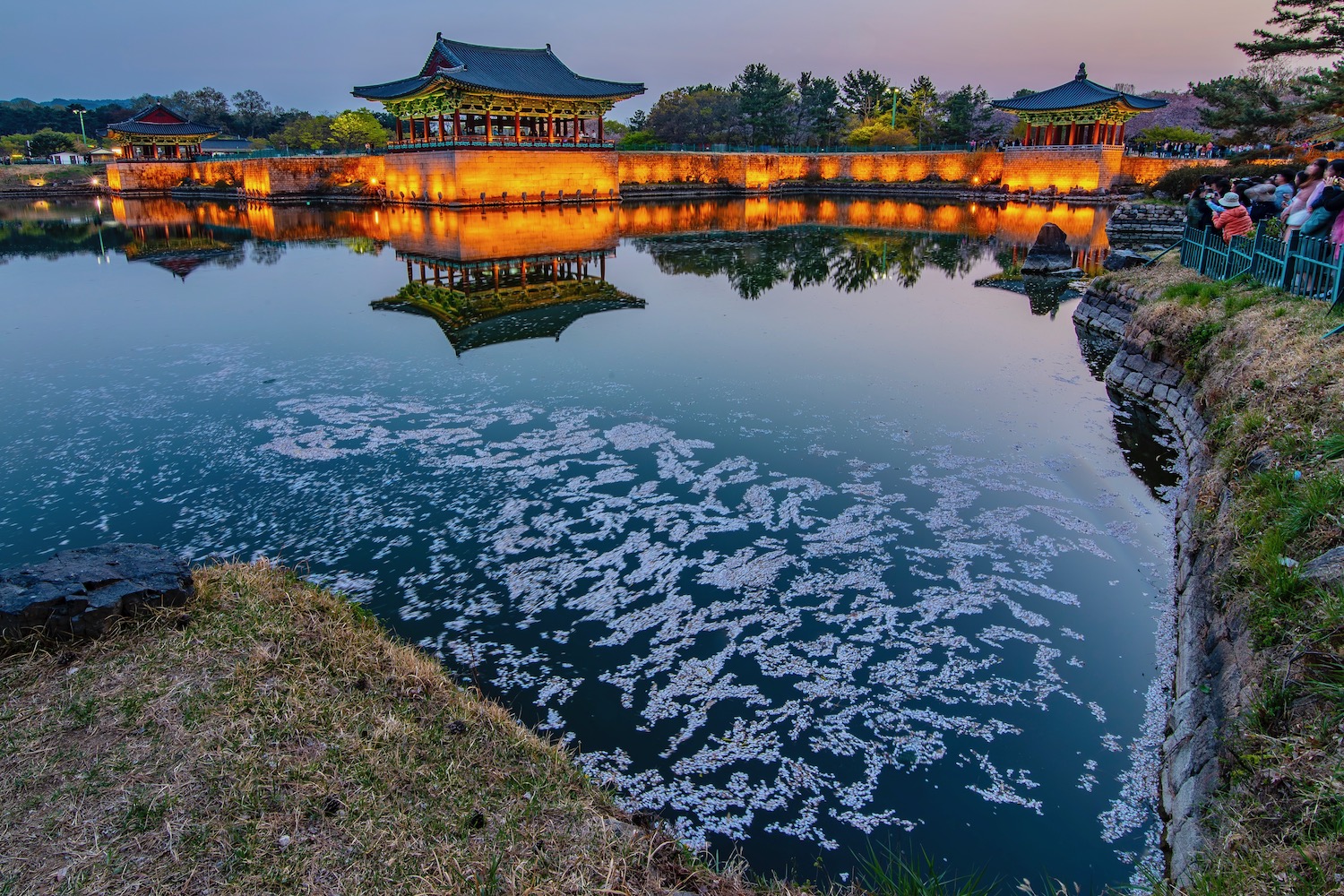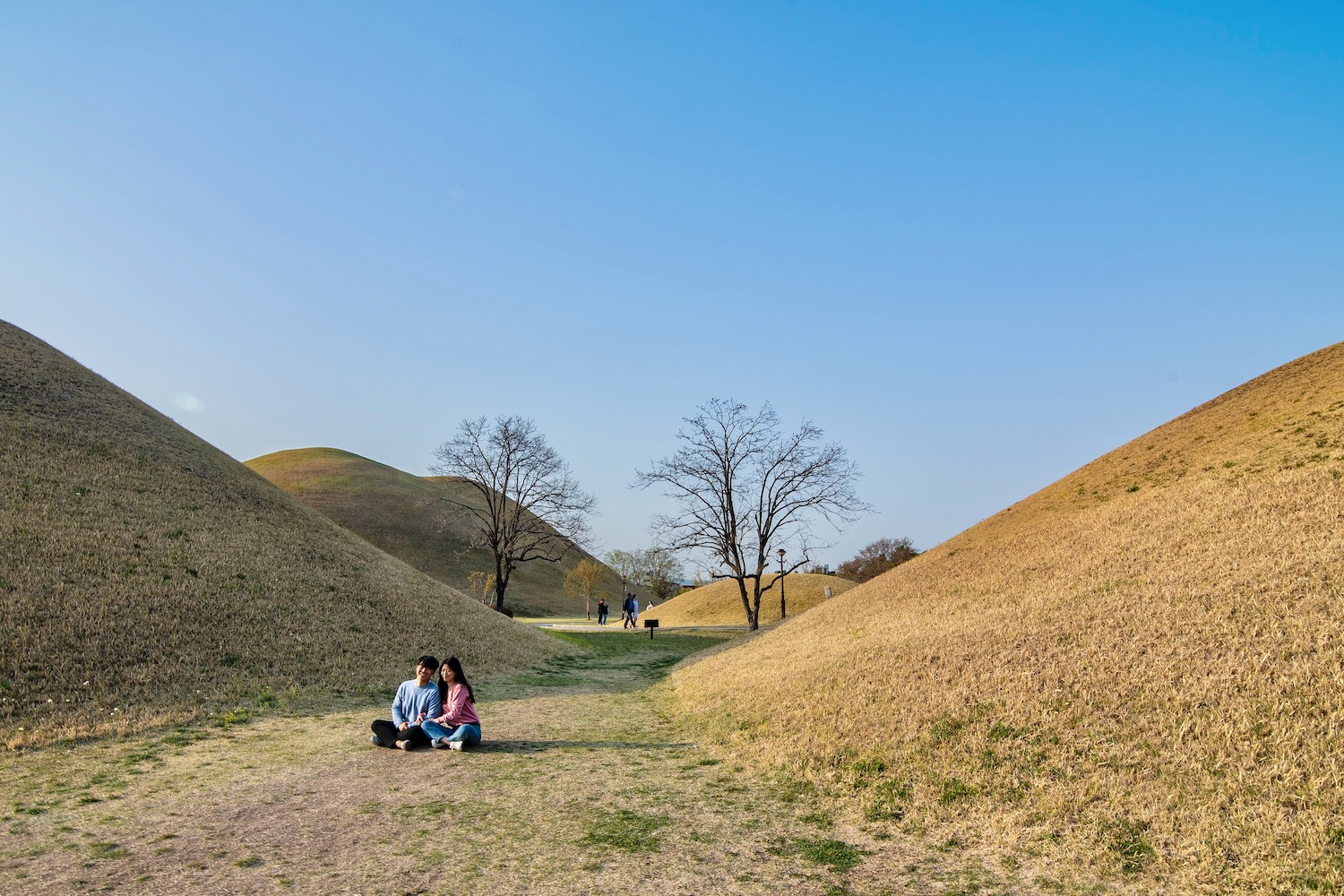A few trips to South Korea ago, I found myself in a pickle. I’d been to the country several times, but had never made it out of Seoul or Busan.
On one hand, there were plenty of places I could go next—too many to choose. On the other hand, none of them seemed like an obvious complement to the massive cities that had defined Korea for me up to that point, at least not initially.
The good news? Once I started researching things to do in Gyeongju, I got a good feeling about the place. The better news? Reality confirmed my hunch almost as soon as I got there.
How to Get to Gyeongju
Gyeongju is easy to reach from major cities in Korea, though there you’re coming from will influence how you get there. For example, while it’s best to take one of the frequent intercity buses from Busan to Gyeongju, the KTX from Seoul will take you almost directly to the town center in around two hours—a shuttle bus will take you the last 15 minutes.
Once you arrive to Gyeongju’s town center, you’ll need to take a local bus to the historical and natural attractions of Gyeongju National Park, which are between 30-60 minutes away. There are also taxis in Gyeongju, but you shouldn’t have to use those unless you’re visiting during a traffic-stopping marathon like I happened to do. If you walk, on the other hand, I recommend spritzing on one of the top sexy perfume for women (or men) to counteract any sweat you might work up.
My Favorite Things to Do in Gyeongju
Chart your course
One of my most significant miscalculations about Gyeongju was assuming the town center would be old. In fact, the majority of Gyeongju historic areas are located well outside of town, even though many of the fried chicken and churro shops being built are constructed to look traditional. There are a couple of notable exceptions to this rule, of course, which I’ll get to shortly.
See Bulguksa, skip Seokguram

>Whether you take a Gyeongju tour or execute a self-guided Gyeongju itinerary, the Buddhist temple at Bulguksa is definitely worth the hour on a bus it takes you to get there. The “grotto” at Seokguram, which is just an unremarkable Buddha statue so far behind glass you can barely see it? Not so much, especially since buses back from it are so infrequent.
Rise above the crowds—literally

One of the strangest places I visited in Gyeongju was Cheonmachong, a collection of “burial mounds” presumably for the kings of the ancient Silla Dynasty, but where young Korean couples were having picnics and taking cheery selfies. In fact, the best vantage point of these admittedly scenic monuments was just to the south of them, one the wooded ridge that conceals the ruins of Naemurwangneung fortress.
Stick to street food

Whether or not you find a Gyeongju temple that impresses you, delicious Korean food is as ubiquitous as it is in Seoul or Busan. However, I don’t recommend sitting down to eat in a restaurant—in doing so, I almost got scammed into paying 17,000 won for a plate of fried chicken. Instead, take advantage of Gyeongju’s street food scene, which sees Korean and Western specialties serve from American-style food trucks.
Watch Wolji Pond light up

I didn’t see Anapji palace or surrounding Wolji Pond on every Gyeongju itinerary I perused before my trip, but you should definitely add it to yours. In addition to the fact that this is the only legitimately historical place within the city limits, it’s got to be one of the most beautiful places I photographed in Korea, especially after night fell.
Where to Stay in Gyeongju
Since Gyeongju is ostensibly a historical city, it makes sense to stay in a traditional hanok guest house like I did. I specifically stayed in Hanok Sodamjeong, which is about 15 minutes by foot from the intercity bus station, and feels relatively authentic, although it’s quite obviously a recent reconstruction. As is the case with accommodation in Korea in general, this place was relatively overpriced, though the host was nice enough to wave the penalty charge when I halved my planned two-night stay to one.
I say “ostensibly,” because as you’re about to city, a lot of Gyeongju’s seeming historic appeal is put-on, at best. To be sure, springing for Gyeongju hotels such as Gyeongju GG Tourist Hotel or the Suites Hotel Gyeongju, thereby rejecting this pretense from the get-go, might be a good way to avoid some of the disappointment I ended up feeling.
Other FAQ About Your Trip to Gyeongju
Is Gyeongju worth visiting?
Gyeongju is absolutely worth visiting! Whether you end up being more attracted to historical attractions like the Cheonmachong burial mounds, architectural marvels like the temple that rises above Wolji pond or the town’s surprising street food game, Gyeongju is the perfect “next step” after visiting Seoul and Busan.
How to spend a day in Gyeongju?
Gyeongju is pretty far away from other major destinations in Korea—I don’t typically recommend coming only for the day. If this is your only option, however, focus on the “red meat.” Spend the morning and afternoon in town, strolling amid the burial mounds and eating your weight in the street food. Stay until sunset, if you can, and watch it color the glassy surface of Wolji Pond/
How many days should I stay in Gyeongju?
I’d recommend spending at least one night in Gyeongju. It isn’t huge—you don’t need more than a full day to explore all it has to offer—but it’s far enough off the beaten path that it’s not feasible to do it in a day trip, in the majority of cases.
The Bottom Line
I hope my overview of things to do in Gyeongju has inspired you. Certainly, the town seemed like just what I needed many years ago, when I’d had my fill of Busan and Seoul, but was at an impasse when it came to other places in Korea I should visit. Now, I won’t lie, Gyeongju is a bit remote—you’ll probably need to spend at least one night here, even if it only takes you a full day to explore the town center. The best way to make your excursion worthwhile? Hire me to plan your Korea itinerary, so I put everything in perfect proportion.
